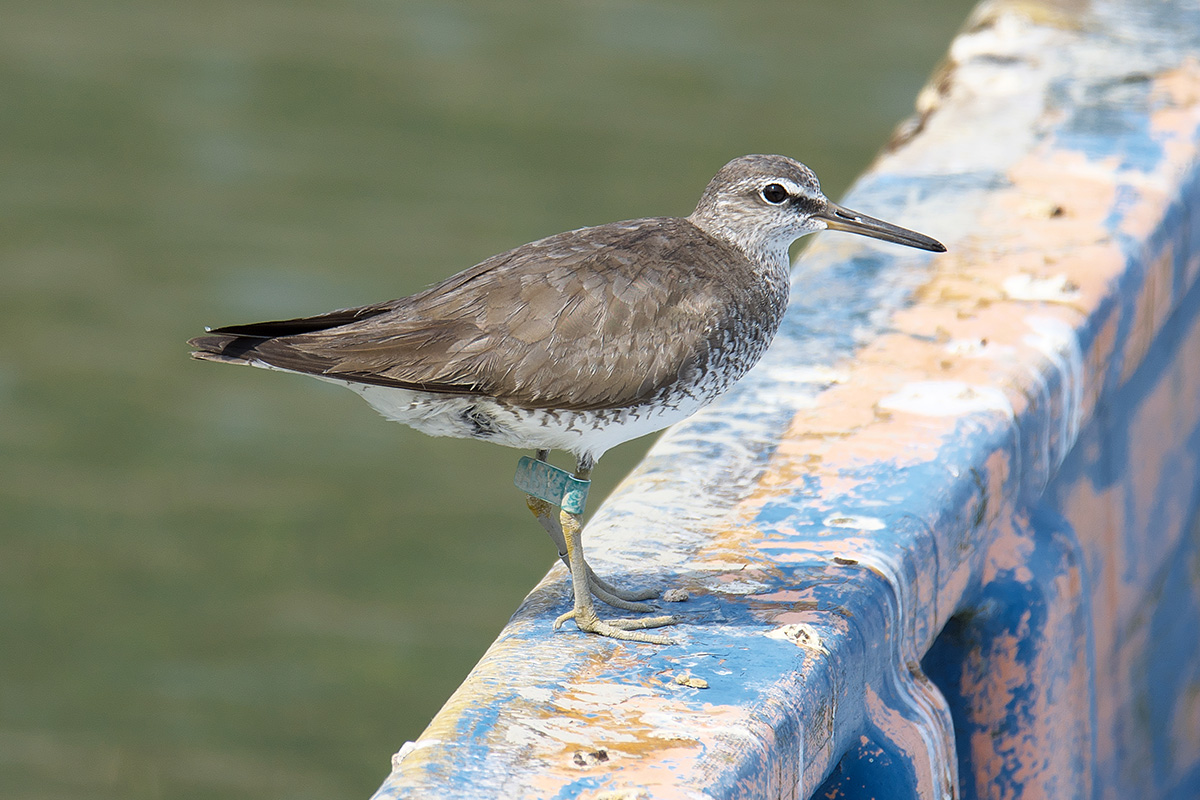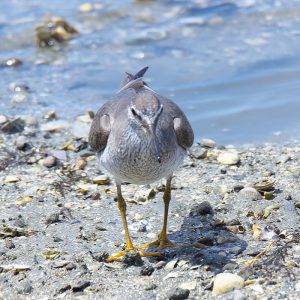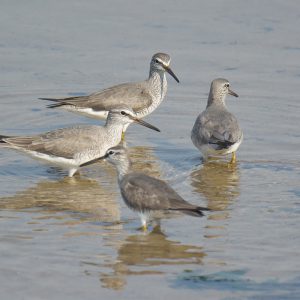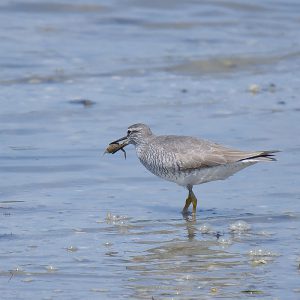むなかたが集まる
電子データベース
電子データベース
キアシシギ

| 種目 | キアシシギ (黄足鷸) | 分類 |
チドリ目 シギ科 キアシシギ属 |
学名 | Heteroscehus brevipes | 英名 | Grey-tailed Tattler |
|---|---|---|---|---|---|---|---|
|
キアシシギ (黄足鷸) |
チドリ目 シギ科 キアシシギ属 |
Heteroscehus brevipes | Grey-tailed Tattler |
宗像市でみられる場所・時期
宗像では旅鳥で,春秋の渡りの時期(4月~6月,8月から10月)に釣川河口周辺で見ることができる。ソリハシシギと混群を形成することもある。春の渡りの時期に見かけることが多い。
特徴
全長25㎝,雌雄同色である。
夏羽は,上面が一様な灰褐色で,顔から頸には灰褐色の斑がある。過眼線は黒く,眉班とアイリングは白い。体下面は白く,胸から脇に灰褐色の横斑がある。嘴は黒く,下嘴基部は淡黄色である。足は黄色である。
冬羽は,胸と上面がやや暗色となり,体に斑紋は無くなる。喉と腹から下尾筒は白くなる。
習性
干潟,河口,海岸の砂浜,岩場,河川,水田などに渡来する。群れで行動することが多く,時には100羽を超える群れになることもある。休息時には波消しブロックや流木,杭,岩,低木などの上にとまる。係留されている漁船などに泊まっていることも多い。飛び立つときに「ピューィ」などと鳴く。
分布
旅鳥。全国で見ることができる。
シベリア東北部(カムチャッカ半島を含む東北部)で繁殖し,フィリピン群島,インドネシア列島,ニューギニア,オーストラリア東岸などで越冬する。
 はじめに
はじめに お問い合わせ
お問い合わせ

